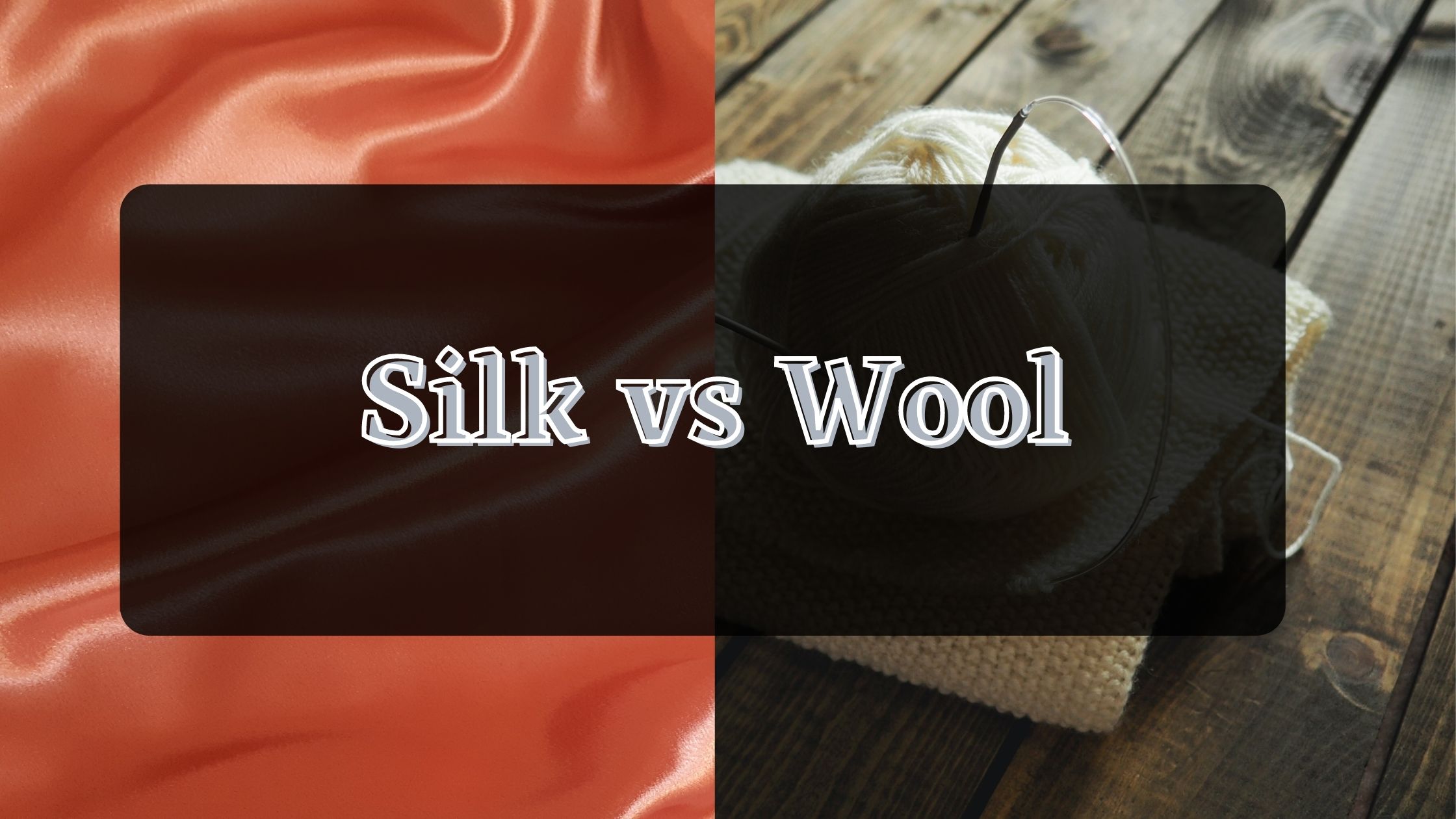Silk and Wool are both fibers are from animal origin. But there is a huge difference between silk vs wool.
Silk: Silk is a protein fiber and only one natural continuous filament made by the silkworm, produced by caterpillars belonging to the genus Bombyx. The most beautiful among all textile fibers is silk, which is claimed as the queen of textiles. It comes from the cocoon of silkworm and requires a great deal of handling and processing, which makes it one of the most expensive fibers also.
Wool: Wool is the natural highly crimped textile fiber obtained from a variety of sheep. Wool is possibly the oldest fiber known to humans. It was the first fibers to be spun into yarn and into the fabric. For thousands of years, wool has been used for clothing and other purposes by different tribes and nations around the world. Wool producing countries are Australia, China, the Former USSR, New Zealand, Uruguay, South Africa, Turkey and Pakistan.
14 Key Differences Between Silk vs Wool
| Character | Silk | Wool |
| Outer surface | Very smooth, regular and fine | Uneven scale |
| Length | 300-2000 meter | 2-8 cm |
| Diameter | 10-20 µm | |
| Polymer | The silk fibron polymer is a linear fibroin polymer | Wool keratin polymer is a helical configuration cross-link polymer |
| Amino acid | Silk polymer is composed of sixteen different amino acids | Wool polymer is consist of 20 different amino acids |
| Di-sulphide bond | Doesn’t contain any di-sulphide bonds | Contains di-sulphide bonds such as cystine |
| Polymer length | Silk polymer is about as long as 140 nm | Shorter than silk polymer |
| Repeating unit | Repeating unit is peptide bond | The repeating unit of wool is peptide bond |
| Chemical bond | Chemical bonding groupings of the silk polymer are hydrogen bonds, the carboxyl and amino groups which give rise to the salt linkages | Chemical bonding grouping of the wool polymer are hydrogen bonds, salt linkages, peptide and disulfide bonds etc |
| Attraction of polymer | The attraction between silk polymer is thought to be hydrogen bonds | The attraction between wool polymers is thought to be hydrogen bonds and van der wall forces. |
| Polymer arrangement | Fibroin polymers must therefore lie closer to-gather than this less than 0.5 nm | Keratin polymer lies in cross-linked a helical pattern |
| Structure | Crystal structure | Amorphous structure |
| Resistant to abrasion | Low | Good |
| Resistant to sunlight | Continuous exposer to light weakens silk faster than cotton or wool | Wool has a good resistance against sunlight |
Frequently Asked Questions
What are the differences in warmth between silk and wool garments?
Wool garments are generally warmer than silk garments due to their insulating properties. Wool fibers are naturally crimped, creating small pockets of air that trap heat close to the body. Silk fibers, on the other hand, are smooth and do not have the same insulating properties as wool. This makes wool a better choice for winter clothing, while silk is more suitable for spring and fall.
How do silk and wool compare in terms of durability?
Wool is generally more durable than silk due to its natural elasticity and resilience. Wool fibers can withstand being stretched and compressed without losing their shape, while silk fibers can be weakened over time by sunlight, moisture, and chemicals. However, both silk and wool require proper care to maintain their durability and longevity.
Which is more suitable for summer wear, silk or wool?
Silk is generally more suitable for summer wear than wool due to its lightweight and breathable nature. Silk fibers are able to absorb moisture and wick it away from the body, keeping the wearer cool and comfortable in hot weather. Wool, on the other hand, is more suitable for winter wear due to its insulating properties.
Can silk or wool clothing be better for individuals with sensitive skin?
Silk is often recommended for individuals with sensitive skin due to its hypoallergenic properties. Silk fibers are naturally smooth and do not contain the same irritants as wool fibers, making them less likely to cause skin irritation or allergic reactions. However, some individuals may still be sensitive to silk and may prefer wool or other materials.
What are the cost comparisons between silk and wool products?
The cost of silk and wool products can vary depending on a number of factors, including the quality of the material, the manufacturing process, and the brand. In general, silk products tend to be more expensive than wool products due to the higher cost of producing silk fibers. However, there are also high-end wool products that can be more expensive than lower-quality silk products.
How do the care requirements differ between silk and wool attire?
Silk and wool attire require different care methods to maintain their quality and longevity. Silk should be hand washed or dry cleaned to avoid damage to the delicate fibers, while wool can be machine washed on a gentle cycle. Wool should be air dried to avoid shrinking or damage to the fibers, while silk should be hung to dry or laid flat to avoid stretching. It is important to follow the care instructions on the garment label to ensure proper care and maintenance.
